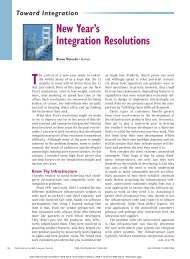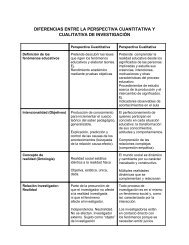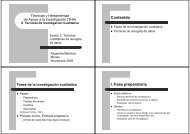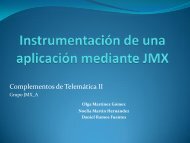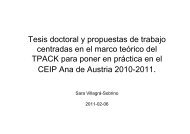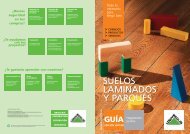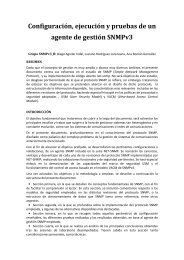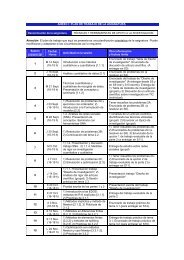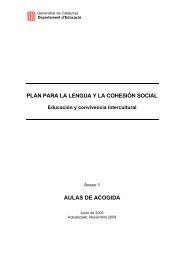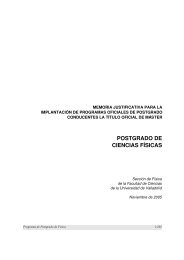Research Questions and Hypotheses
Research Questions and Hypotheses
Research Questions and Hypotheses
You also want an ePaper? Increase the reach of your titles
YUMPU automatically turns print PDFs into web optimized ePapers that Google loves.
188 Designing <strong>Research</strong><br />
Qualitative Procedures 189<br />
the information learned during the data analysis. The use of a codebook is<br />
especially helpful for fields in which quantitative research dominates <strong>and</strong> a<br />
more systematic approach to qualitative research is needed.<br />
Returning to the general coding process, some researchers have found<br />
it useful to h<strong>and</strong> code qualitative transcripts or information, sometimes<br />
using color code schemes <strong>and</strong> to cut <strong>and</strong> paste text segments onto note<br />
cards. This is a laborious <strong>and</strong> time-consuming approach. Others tend to<br />
use qualitative computer software programs to help code, organize, <strong>and</strong><br />
sort information that will be useful in writing the qualitative study. Several<br />
excellent computer software programs are available, <strong>and</strong> they have similar<br />
features: good tutorials <strong>and</strong> demonstration CDs, ability to incorporate both<br />
text <strong>and</strong> image (e.g., photographs) data, the feature of storing <strong>and</strong> organizing<br />
data, the search capacity of locating all text associated with specific<br />
codes, interrelated codes for making queries of the relationship among<br />
codes, <strong>and</strong> the import <strong>and</strong> export of qualitative data to quantitative programs,<br />
such as spreadsheets or data analysis programs.<br />
The basic idea behind these programs is that using the computer is an<br />
efficient means for storing <strong>and</strong> locating qualitative data. Although the<br />
researcher still needs to go through each line of text (as in transcriptions)<br />
<strong>and</strong> assign codes, this process may be faster <strong>and</strong> more efficient than h<strong>and</strong><br />
coding. Also, in large databases, the researcher can quickly locate all passages<br />
(or text segments) coded the same <strong>and</strong> determine whether participants<br />
are responding to a code idea in similar or different ways. Beyond<br />
this, the computer program can facilitate comparing different codes (e.g.,<br />
How do males <strong>and</strong> females—the first code of gender—differ in terms of<br />
their attitu o es to smo ing—a secon e co e e<br />
the software programs that make them a logical choice for qualitative data<br />
analysis over h<strong>and</strong> coding. As with any software program, qualitative<br />
software programs require time <strong>and</strong> skill to learn <strong>and</strong> employ effectively,<br />
although books for learning the programs are widely available (e.g.,<br />
Weitzman & Miles, 1995).<br />
Most of the programs are available only on the PC platform. The computer<br />
software programs that my staff <strong>and</strong> I use in my research office are<br />
these:<br />
MAXqda (http://www.maxqda.com/) . This is an excellent PC-based<br />
program from Germany that helps researchers systematically evaluate<br />
<strong>and</strong> interpret qualitative texts. It has all of the features mentioned earlier.<br />
Atlas.ti (http://www.atlasti.com). This is another PC-based program<br />
from Germany that enables a researcher to organize text, graphic,<br />
audio, <strong>and</strong> visual data Piles, along with coding, memos <strong>and</strong> findings, into<br />
a project.<br />
QSR NVivo (http://www.qsrinternational.com/) This program, from<br />
Australia, features the popular software program N6 (or Nud.ist) <strong>and</strong> NVivo<br />
concept mapping in combination. It is available only for Windows PC.<br />
HyperRESEARCH (http://www.researchware.com/) . This is a program<br />
available for either the MAC or PC. It is an easy-to-use qualitative<br />
software package enabling users to code, retrieve, build theories, <strong>and</strong> conduct<br />
analyses of the data.<br />
Step 4. Use the coding process to generate a description of the setting or<br />
people as well as categories or themes for analysis. Description involves a<br />
detailed rendering of information about people, places, or events in a setting.<br />
<strong>Research</strong>ers can generate codes for this description. This analysis is<br />
useful in designing detailed descriptions for case studies, ethnographies,<br />
<strong>and</strong> narrative research projects. Then use the coding to generate a small<br />
number of themes or categories, perhaps five to seven categories for a<br />
research study. These themes are the ones that appear as major findings in<br />
qualitative studies <strong>and</strong> are often used to create headings in the findings<br />
sections of studies. They should display multiple perspectives from individuals<br />
<strong>and</strong> be supported by diverse quotations <strong>and</strong> specific evidence.<br />
Beyond identifying the themes during the coding process, qualitative<br />
researchers can do much with themes to build additional layers of complex<br />
analysis. For example, researchers interconnect themes into a story<br />
line (as in narratives) or develop them into a theoretical model (as in<br />
grounded theory). Themes are analyzed for each individual case <strong>and</strong><br />
across different cases (as in case studies) or shaped into a general description<br />
(as in phenomenology). Sophisticated qualitative studies go beyond<br />
description <strong>and</strong> theme identification <strong>and</strong> into complex theme connections.<br />
ep . vance ow e e escrip n n<br />
the qualitative narrative. The most popular approach is to use a narrative<br />
passage to convey the findings of the analysis. This might be a discussion<br />
that mentions a chronology of events, the detailed discussion of several<br />
themes (complete with subthemes, specific illustrations, multiple perspectives<br />
from individuals, <strong>and</strong> quotations) or a discussion with interconnecting<br />
themes. Many qualitative researchers also use visuals, figures, or tables<br />
as adjuncts to the discussions. They present a process model (as in<br />
grounded theory), advance a drawing of the specific research site (as in<br />
ethnography), or convey descriptive information about each participant<br />
in a table (as in case studies <strong>and</strong> ethnographies).<br />
Step 6. A final step in data analysis involves making an interpretation<br />
or meaning of the data. Asking, "What were the lessons learned?" captures<br />
the essence of this idea (Lincoln & Guba, 1985). These lessons could<br />
be the researcher's personal interpretation, couched in the underst<strong>and</strong>ing<br />
that the inquirer brings to the study from her or his own culture, history,<br />
<strong>and</strong> experiences. It could also be a meaning derived from a comparison of<br />
the findings with information gleaned from the literatura or theories. In this<br />
way, authors suggest that the findings confirm past information or diverge<br />
from it. It can also suggest new questions that need to be asked--questions



